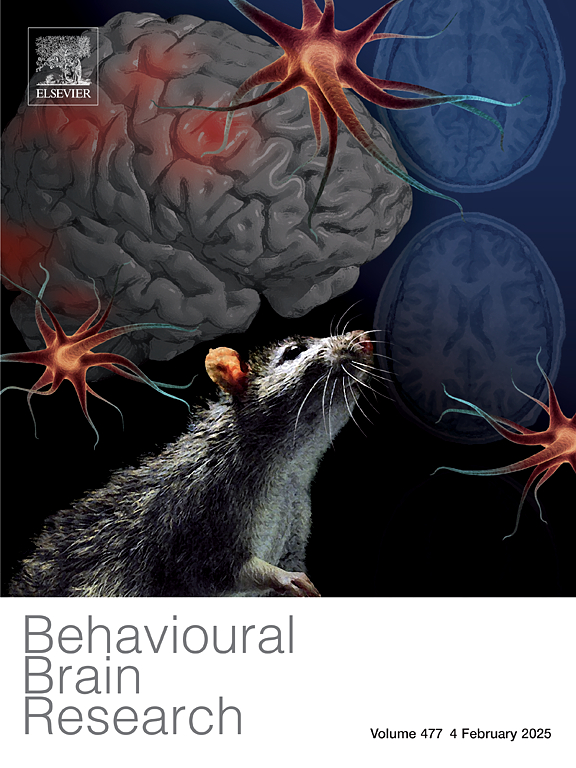Dynamic analysis of protracted withdrawal symptoms, neurotransmitters, cytokine content and psychological status of heroin addicts in Yunnan Province
IF 2.6
3区 心理学
Q2 BEHAVIORAL SCIENCES
引用次数: 0
Abstract
Background
Yunnan Province, adjacent to the "Golden Triangle," a notorious drug trafficking region, faces a severe public health challenge due to high rates of heroin addiction. Despite existing interventions, protracted withdrawal symptoms (PWS) remain a significant barrier to recovery and a primary cause of relapse. This study investigates the dynamic changes in neurotransmitter and cytokine levels and their correlation with PWS and psychological status in heroin addicts undergoing detoxification.
Methods
A prospective cohort study was conducted with 136 voluntary heroin detoxification patients from March 2018 to October 2021. Participants underwent assessments at 30, 180, and 360 days post-detoxification, focusing on sociodemographic data, heroin usage characteristics, neurotransmitter (dopamine, β-endorphin, epinephrine) and cytokine (IL-2, IL-4, IFN-γ) levels, as well as psychological evaluations for anxiety and depression using the Self-rating Anxiety Scale (SAS) and Self-rating Depression Scale (SDS).
Findings
The study identified significant fluctuations in neurotransmitter and cytokine levels throughout the detoxification period, which correlated with the severity and variation of PWS. Notably, symptoms such as emotional anxiety and inability to concentrate gradually decreased over time, whereas drug cravings peaked at 180 days, coinciding with the lowest levels of IL-2, IL-4, and IFN-γ. These immune function disruptions suggest a critical period of heightened vulnerability to relapse.
Interpretation
The findings underscore the necessity of long-term rehabilitation strategies that integrate physiological, psychological, and social interventions to manage heroin addiction effectively. Continuous monitoring of neurotransmitter and cytokine levels could provide early indicators of relapse risk, informing targeted interventions during critical recovery periods.
云南省海洛因依赖者持久戒断症状、神经递质、细胞因子含量及心理状况动态分析
毗邻“金三角”的云南省是一个臭名昭著的贩毒地区,由于海洛因成瘾率高,该省面临着严峻的公共卫生挑战。尽管有现有的干预措施,但长期戒断症状(PWS)仍然是康复的重要障碍和复发的主要原因。本研究旨在探讨海洛因依赖者戒毒过程中神经递质和细胞因子水平的动态变化及其与PWS和心理状态的相关性。方法对2018年3月至2021年10月136例自愿戒毒的海洛因患者进行前瞻性队列研究。参与者在戒毒后30、180和360天接受评估,重点关注社会人口统计数据、海洛因使用特征、神经递质(多巴胺、β-内啡肽、肾上腺素)和细胞因子(IL-2、IL-4、IFN-γ)水平,以及使用焦虑自评量表(SAS)和抑郁自评量表(SDS)对焦虑和抑郁进行心理评估。研究发现,在整个解毒期间,神经递质和细胞因子水平显著波动,这与PWS的严重程度和变化有关。值得注意的是,随着时间的推移,情绪焦虑和无法集中注意力等症状逐渐减少,而对药物的渴望在180天达到顶峰,与IL-2、IL-4和IFN-γ的最低水平一致。这些免疫功能的破坏表明有一个复发的关键时期。研究结果强调了综合生理、心理和社会干预的长期康复策略的必要性,以有效地控制海洛因成瘾。持续监测神经递质和细胞因子水平可以提供早期复发风险指标,为关键恢复期的有针对性干预提供信息。
本文章由计算机程序翻译,如有差异,请以英文原文为准。
求助全文
约1分钟内获得全文
求助全文
来源期刊

Behavioural Brain Research
医学-行为科学
CiteScore
5.60
自引率
0.00%
发文量
383
审稿时长
61 days
期刊介绍:
Behavioural Brain Research is an international, interdisciplinary journal dedicated to the publication of articles in the field of behavioural neuroscience, broadly defined. Contributions from the entire range of disciplines that comprise the neurosciences, behavioural sciences or cognitive sciences are appropriate, as long as the goal is to delineate the neural mechanisms underlying behaviour. Thus, studies may range from neurophysiological, neuroanatomical, neurochemical or neuropharmacological analysis of brain-behaviour relations, including the use of molecular genetic or behavioural genetic approaches, to studies that involve the use of brain imaging techniques, to neuroethological studies. Reports of original research, of major methodological advances, or of novel conceptual approaches are all encouraged. The journal will also consider critical reviews on selected topics.
 求助内容:
求助内容: 应助结果提醒方式:
应助结果提醒方式:


